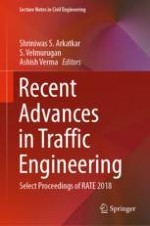2020 | OriginalPaper | Chapter
Identifying a Suitable Pedestrian Simulation Software—A Case Study on Emergency Evacuation of Classroom
Authors : Hemant Jain, Lakshmi Devi Vanumu, K. Ramachandra Rao
Published in: Recent Advances in Traffic Engineering
Publisher: Springer Singapore
Activate our intelligent search to find suitable subject content or patents.
Select sections of text to find matching patents with Artificial Intelligence. powered by
Select sections of text to find additional relevant content using AI-assisted search. powered by
